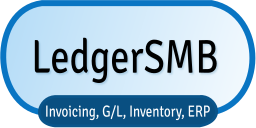Compose tips
Text Formats
Filtered HTML
- Web page addresses and email addresses turn into links automatically.
Allowed HTML tags: <br> <p> <h1> <h2 id> <h3 id> <h4 id> <h5 id> <cite> <dl> <dt> <dd> <a hreflang href aria-label title class target="_blank"> <blockquote cite> <ul type> <ol type start> <img data-entity-type data-entity-uuid src alt height width> <strong> <em> <code class="language-*"> <pre> <li> <table> <tr> <td rowspan colspan> <th rowspan colspan> <thead> <tbody> <tfoot> <caption> <drupal-media data-entity-type data-entity-uuid alt data-view-mode>
This site allows HTML content. While learning all of HTML may feel intimidating, learning how to use a very small number of the most basic HTML "tags" is very easy. This table provides examples for each tag that is enabled on this site.
For more information see the HTML Living Standard or use your favorite search engine to find other sites that explain HTML.
Tag Description You Type You Get By default line break tags are automatically added, so use this tag to add additional ones. Use of this tag is different because it is not used with an open/close pair like all the others. Use the extra " /" inside the tag to maintain XHTML 1.0 compatibility Text with <br />line breakText with
line breakBy default paragraph tags are automatically added, so use this tag to add additional ones. <p>Paragraph one.</p> <p>Paragraph two.</p>Paragraph one.
Paragraph two.
Heading <h1>Title</h1>Title
Heading <h2>Subtitle</h2>Subtitle
Heading <h3>Subtitle three</h3>Subtitle three
Heading <h4>Subtitle four</h4>Subtitle four
Heading <h5>Subtitle five</h5>Subtitle five
Cited <cite>Cited</cite>Cited Definition lists are similar to other HTML lists. <dl> begins the definition list, <dt> begins the definition term and <dd> begins the definition description. <dl> <dt>First term</dt> <dd>First definition</dd> <dt>Second term</dt> <dd>Second definition</dd> </dl>- First term
- First definition
- Second term
- Second definition
No help provided for tag dt. No help provided for tag dd. Anchors are used to make links to other pages. <a href="https://ledgersmb.org">LedgerSMB</a>LedgerSMB Block quoted <blockquote>Block quoted</blockquote>Block quoted
Unordered list - use the <li> to begin each list item <ul> <li>First item</li> <li>Second item</li> </ul>- First item
- Second item
Ordered list - use the <li> to begin each list item <ol> <li>First item</li> <li>Second item</li> </ol>- First item
- Second item
No help provided for tag img. Strong <strong>Strong</strong>Strong Emphasized <em>Emphasized</em>Emphasized Coded text used to show programming source code <code>Coded</code>CodedPreformatted <pre>Preformatted</pre>Preformatted
No help provided for tag li. Table <table> <tr><th>Table header</th></tr> <tr><td>Table cell</td></tr> </table>Table header Table cell No help provided for tag tr. No help provided for tag td. No help provided for tag th. No help provided for tag thead. No help provided for tag tbody. No help provided for tag tfoot. No help provided for tag caption. No help provided for tag drupal. Most unusual characters can be directly entered without any problems.
If you do encounter problems, try using HTML character entities. A common example looks like & for an ampersand & character. For a full list of entities see HTML's entities page. Some of the available characters include:
Character Description You Type You Get Ampersand && Greater than >> Less than << Quotation mark "" - Lines and paragraphs are automatically recognized. The <br /> line break, <p> paragraph and </p> close paragraph tags are inserted automatically. If paragraphs are not recognized simply add a couple of blank lines.
Plain text
- No HTML tags allowed.
- Web page addresses and email addresses turn into links automatically.
- Lines and paragraphs are automatically recognized. The <br /> line break, <p> paragraph and </p> close paragraph tags are inserted automatically. If paragraphs are not recognized simply add a couple of blank lines.
